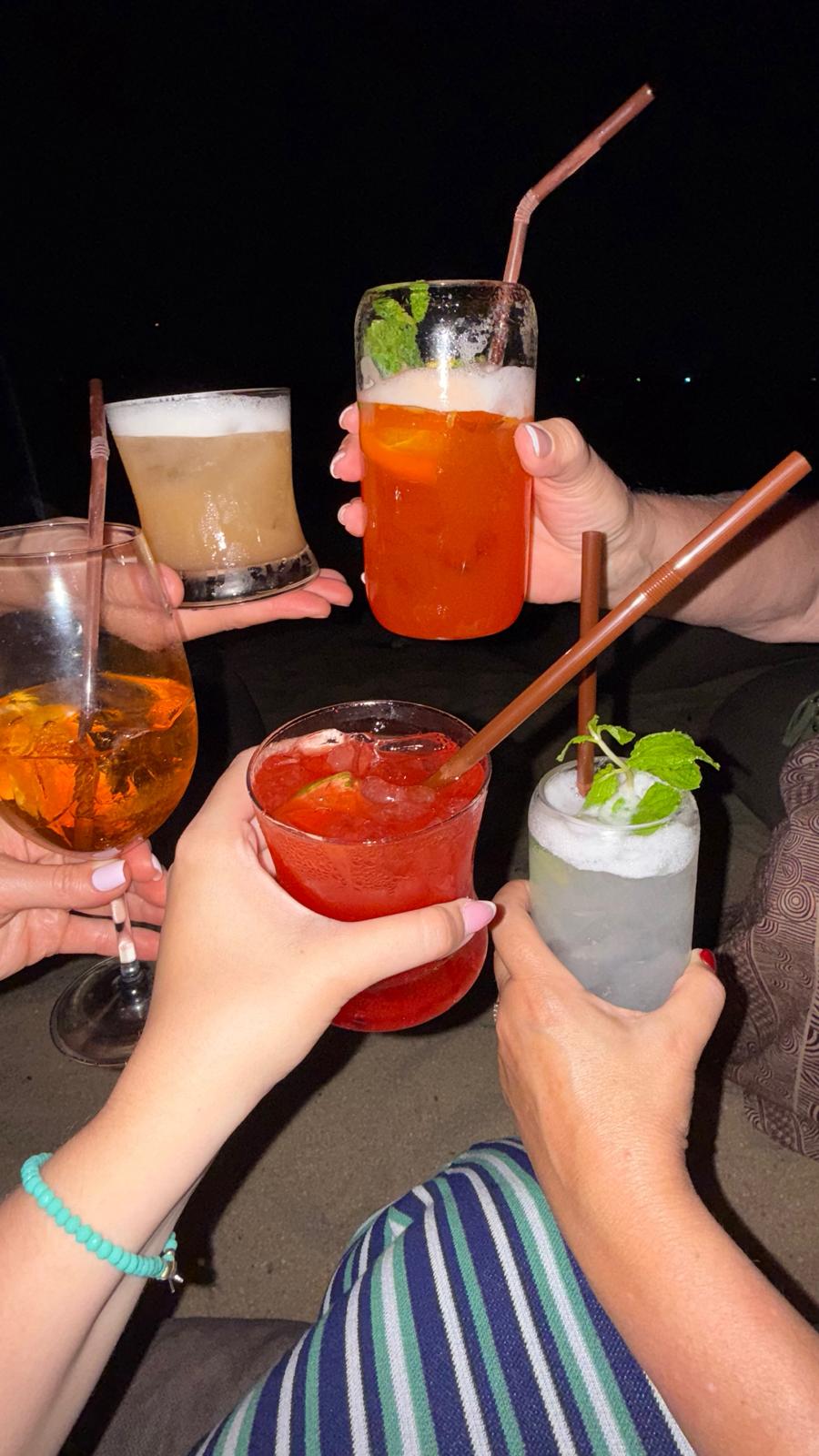There’s a small universe happening in this picture. Five glasses lifted in the dark, the background swallowed in blackness except for tiny distant lights, maybe boats or a shoreline you can just barely sense. The sand is right under the knees, the air feels warm, the camera flash catches everything too honestly: the condensation dripping down the glasses, the slight smudge of lipstick on one rim, a bent straw refusing to stand straight, the glimmer of ice melting faster than anyone drinks. There’s something very tender in that. This isn’t a staged rooftop bar scene. It’s the kind of night that unfolds softly, without planning, the kind of night that feels like a small reward for making it through all the noise of travel. One cocktail becomes two. The laughter loosens. Someone says, “just stay a little longer.” And everyone does.

The guilty pleasure of cocktails isn’t just alcohol. It’s the permission to slow down. To let the world become warmer and a bit blurred at the edges. To say yes to something unnecessary, which somehow ends up being the most necessary thing of all. And since we’re here, holding onto this feeling, we may as well talk about the drinks themselves — the ones that show up again and again on beaches, rooftops, night markets, hotel bars, and quiet seaside shacks with plastic chairs and music slightly too loud. Some cocktails travel better than others. Some taste like vacation even if you have them at home. But each of these has its moment, its place in the world, and its own little emotional weather.
The Aperol Spritz shines in late afternoons, especially near water. It tastes like sunlight on a terrace, like slowly flattering yourself that you’re continental now, like someone who takes their time. It’s slightly bitter, slightly sweet, and always the color of a calm summer evening. Then there’s the Mojito — mint crushed just enough, lime squeezed unevenly, ice clinking like little bells. A mojito is the cocktail of heat. It belongs to tropical air and bare feet, and when it’s done right, it wakes you up instead of slowing you down. The Caipirinha, on the other hand, is bold, loud, sweet, sharp. It’s the drink you order when the night is just starting and you’re ready to let it get a little wild. Brazil distilled into one glass: joy that doesn’t apologize.
A Negroni is for when you’ve grown tired of pretending. It’s bitter, serious, almost philosophical — the cocktail of people who know the night may not fix anything, but choose to stay out anyway. Meanwhile, the Piña Colada is pure holiday. It doesn’t care about taste profiles or elegance. It tastes like sunscreen smells, like beach playlists, like laughter that comes from your stomach. It is the anti-responsibility drink. A Margarita makes life feel cinematic, salt on your lips, lime that bites a little, tequila that arrives with personality. And if someone orders an Espresso Martini, the evening has just entered its second life. It is the universal symbol of “we are not going home yet.”
The thing about cocktails is that they are emotional travel companions. They don’t just taste like rum or gin or citrus. They taste like where you are, who you’re with, how tired or excited or sun-worn you feel. They become markers in memory. Years later you won’t remember all the city streets you walked, but you will remember this — the night air warm on your skin, the quiet rush of waves somewhere beyond the dark, and the clink of glasses lifted gently, as if to say: we were here, together, and it mattered.
Leave a Reply